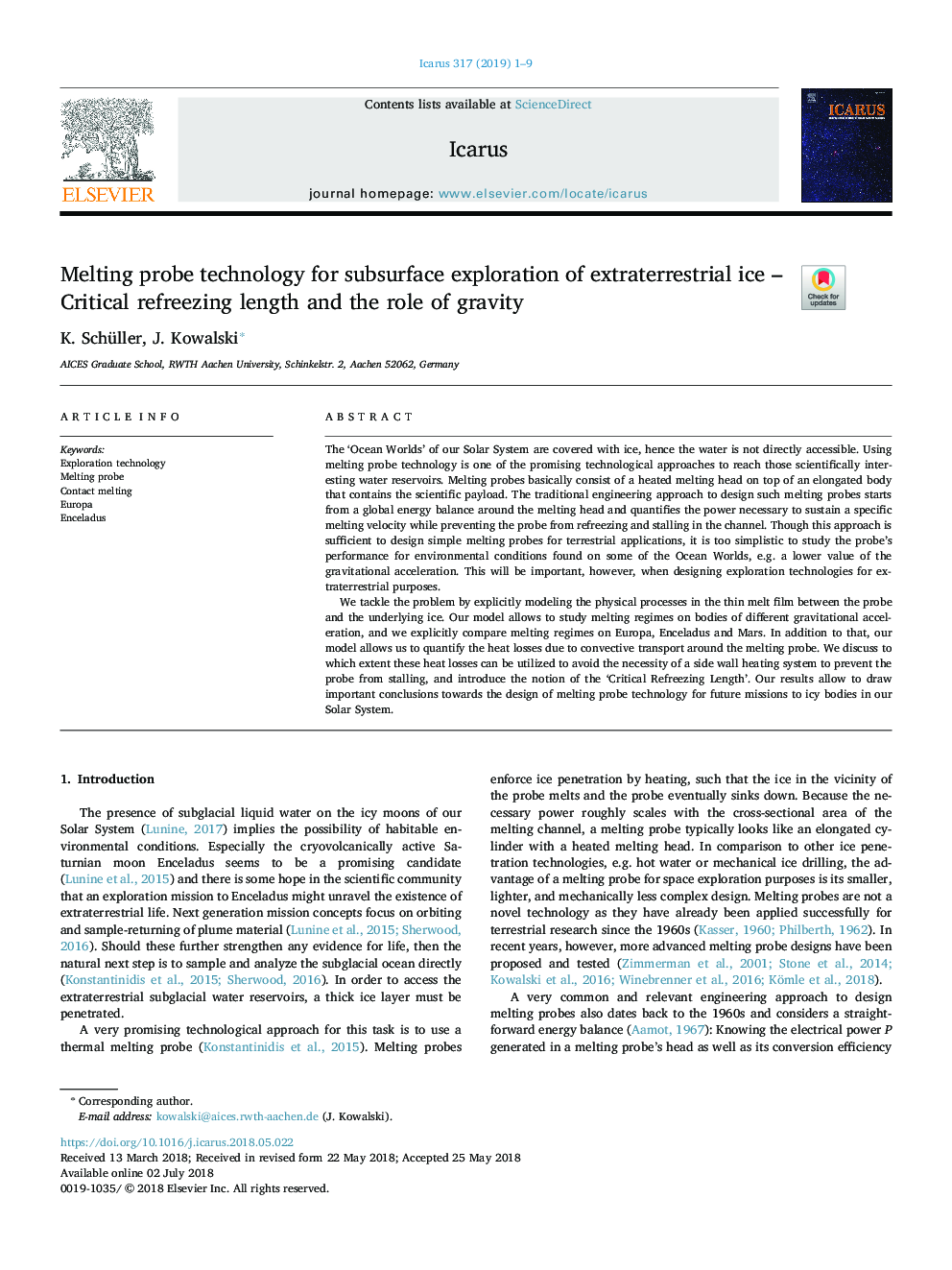| Article ID | Journal | Published Year | Pages | File Type |
|---|---|---|---|---|
| 8133621 | Icarus | 2019 | 9 Pages |
Abstract
We tackle the problem by explicitly modeling the physical processes in the thin melt film between the probe and the underlying ice. Our model allows to study melting regimes on bodies of different gravitational acceleration, and we explicitly compare melting regimes on Europa, Enceladus and Mars. In addition to that, our model allows us to quantify the heat losses due to convective transport around the melting probe. We discuss to which extent these heat losses can be utilized to avoid the necessity of a side wall heating system to prevent the probe from stalling, and introduce the notion of the 'Critical Refreezing Length'. Our results allow to draw important conclusions towards the design of melting probe technology for future missions to icy bodies in our Solar System.
Related Topics
Physical Sciences and Engineering
Earth and Planetary Sciences
Space and Planetary Science
Authors
K. Schüller, J. Kowalski,
